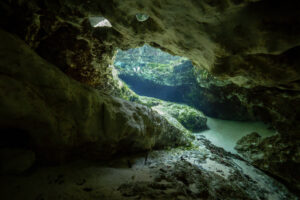What is a Long Hose used for in Scuba Diving?
The long hose is an essential piece of equipment for cave and technical divers, designed to improve air sharing capabilities and maneuverability in confined spaces. Ranging from 5 ft (1.5 m) to 7 ft (2.1 m) in length, these interstage hoses connect the first and second stages of a scuba regulator, allowing for increased flexibility and safety during challenging dives. This entry will discuss the history, purpose, and proper usage of long hoses, as well as their advantages and potential disadvantages.
History
Long hoses were initially adopted by cave and technical divers in the 1970s, when the sport began to evolve and divers started exploring more complex environments. As these divers ventured further into underwater caves and wrecks, they recognized the need for equipment that could facilitate air sharing, especially in tight spaces. Over the years, the long hose has become a standard piece of equipment for cave and technical divers, as well as for some recreational divers looking to enhance their safety and adaptability underwater.
Purpose
The primary purpose of the long hose is to simplify air sharing between two divers. In situations where a diver runs out of air or experiences equipment failure, the long hose allows the out-of-air diver to breathe from their buddy’s air supply while maintaining a safe distance. This is particularly important in confined spaces like caves and wrecks, where close proximity between divers can lead to entanglement or restricted movement.
The long hose also aids in maintaining a streamlined profile, as it can be tucked away neatly when not in use. This reduces drag and minimizes the chances of the hose getting caught on obstacles, which can be hazardous in technical diving environments.
Usage
To use a long hose effectively, divers must learn proper hose management techniques. This involves securing the hose to the diver’s equipment and body to prevent entanglement and ensure quick deployment in emergency situations. Common methods for managing a long hose include looping it around the neck or using a bungee or retainer clip to keep the hose close to the diver’s body.
When air sharing is necessary, the diver with the long hose will donate it to their buddy, while switching to their own alternate air source, such as an octopus or integrated backup regulator. The out-of-air diver will then have enough hose length to maintain a comfortable distance, ensuring that both divers can move freely without being entangled or restricted by the hose.
Advantages
Long hoses offer several advantages for divers, particularly in cave and technical diving situations:
- Enhanced air sharing: The length of the hose allows divers to share air more comfortably and with greater flexibility, reducing stress and ensuring a safer dive.
- Streamlined profile: The long hose can be stowed neatly, minimizing drag and the risk of entanglement.
- Versatility: Long hoses are compatible with various regulator setups, making them suitable for a range of diving scenarios.
- Increased safety: The use of a long hose can help prevent entanglements and other hazards, reducing the risk of accidents during challenging dives.
Disadvantages
While long hoses offer numerous benefits, there are some potential drawbacks to consider:
- Additional training: Divers must learn proper hose management techniques to use a long hose effectively and safely.
- Complexity: Managing a long hose can be more complicated than using a standard hose, particularly in high-stress situations.
- Weight and bulk: Long hoses are typically heavier and bulkier than standard hoses, which may be a consideration for divers with limited carrying capacity.
Key Takeaways
The long hose has become an indispensable tool for cave and technical divers, offering increased safety and flexibility when air sharing is necessary. Although it requires additional training and management, the advantages of using a long hose in challenging underwater environments
far outweigh the potential drawbacks. In addition to improved air sharing capabilities, long hoses contribute to a more streamlined profile and reduced risk of entanglement. Furthermore, their compatibility with various regulator setups ensures that divers can adapt to different diving scenarios with ease.
As scuba diving continues to evolve, and more divers explore the intricate environments of caves and wrecks, the long hose remains a vital piece of equipment for those seeking to push their limits while maintaining a high level of safety. For recreational divers, incorporating a long hose into their gear setup can also provide added security and versatility during their underwater adventures.
The long hose is an essential component of the modern diver’s toolkit, offering improved air sharing, enhanced maneuverability, and increased safety in various diving environments. By understanding the history, purpose, and proper usage of this equipment, divers can optimize their underwater experiences and confidently tackle the challenges of technical and cave diving.







